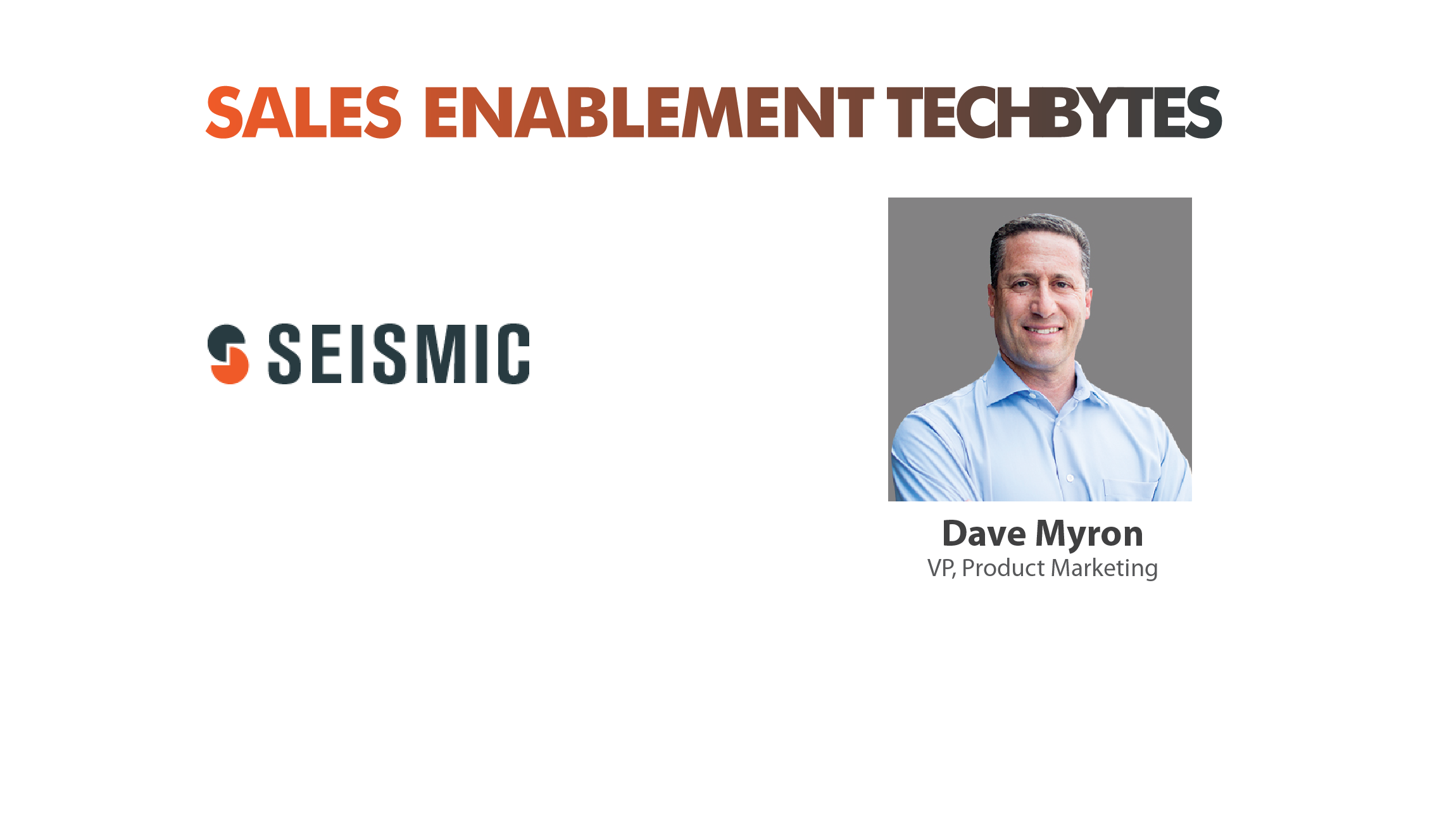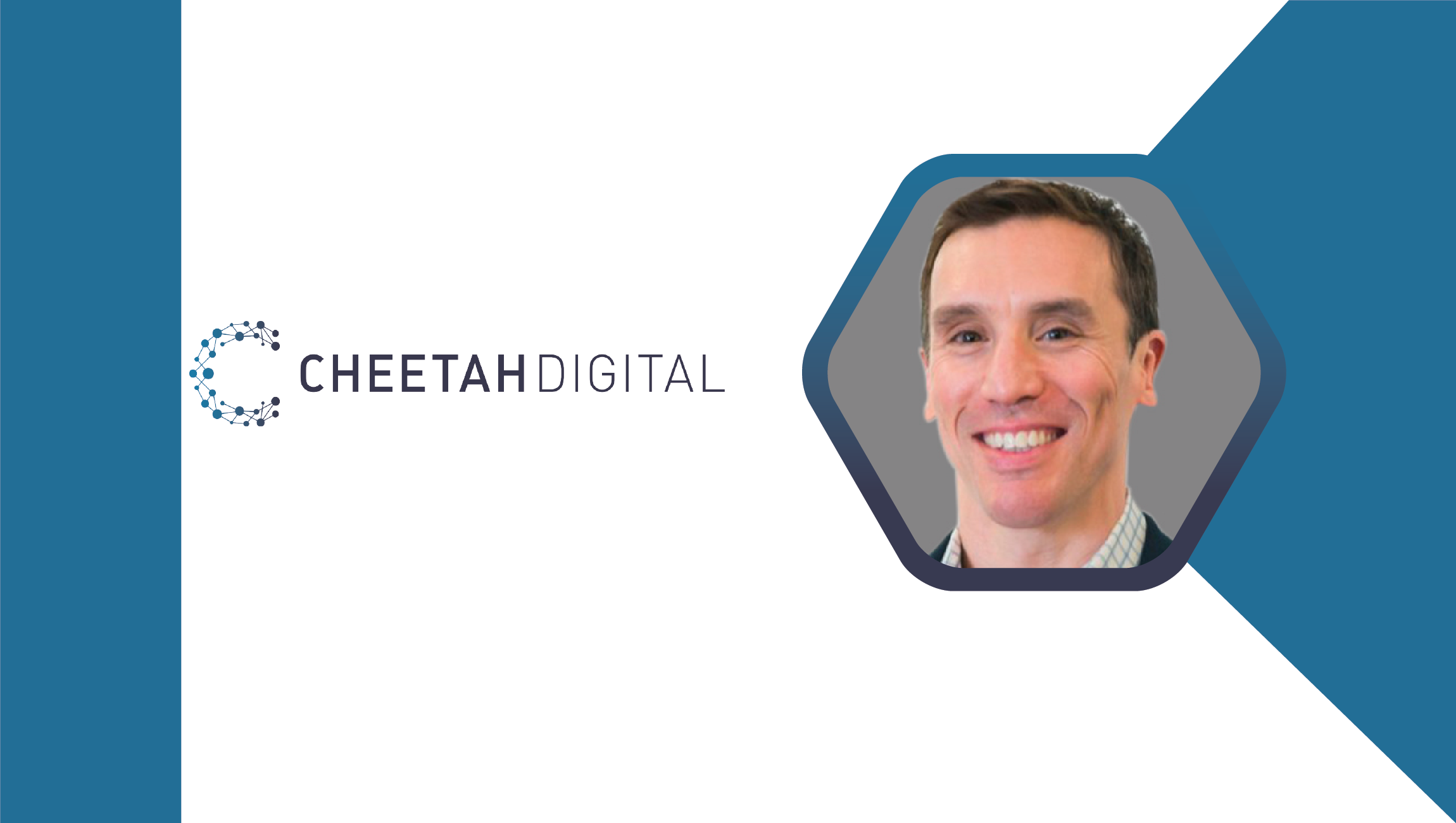Dave Myron
VP Product Marketing, Seismic Software
Rated among the top sales enablement solutions, Seismic enables sales reps to build an effective, fast-paced engagement lifecycle using personalized content. “Designed for sales, approved by marketers” – the right content for sales enablement makes sales processes shorter and improves performance. We chatted with Dave Myron, Vice President Product Marketing at Seismic, to get an insight into their Actionable Insights and LiveDoc technology.
Html code here! Replace this with any non empty text and that's it.
MTS: Tell us about your role at Seismic Software and how you arrived at this position?
Dave Myron: I’m the vice president of product marketing and management here at Seismic, helping lead both the product roadmap and messaging around functionality and features. I’ve been with Seismic since 2015, previously having held similar positions at large tech companies such as Xilinx and Intel.
It was actually at those companies where I noticed major alignment issues between sales and marketing, along with content management and delivery processes that were actually slowing sales cycles as opposed to helping them. When I first saw the Seismic product, I immediately saw the incredible benefits it could bring to large companies and the teams I had worked on in the past, and I jumped at the opportunity to join.
MTS: How deep is Seismic into AI/ML technologies when it comes to Intuitive Content Management?
Dave: Seismic is deeply invested in artificial intelligence and machine learning innovation across the entire platform, and we see it as a core component of our product roadmap going forward. In fact, late last year we acquired a machine learning company to help further drive how we think about and approach AI at Seismic.
When it comes to sales and marketing enablement, the potential of AI is huge. It will help uncover insights into which pieces of content work and when, that are not detectable to humans; it will assist in onboarding new sales reps by providing them with a blueprint on how to interact with prospects in any situation; it will be a boon to content tagging and categorization.
Ultimately, when it comes to ensuring that sales reps are prepared for every interaction and are given the tools they need to succeed in them, the combination of man and machine will result in great gains for each and every sales rep, and each and every marketer whose job it is to support them.
MTS: Other than Sharepoint and Salesforce CRM, what are the other marketing/engagement platforms that support LiveDocs technology? What would the next version look like and how soon?
Dave: LiveDocs technology is a fundamental capability within the Seismic platform that allows for the dynamic assembly of content by sales reps based on rules put in place by the marketing team. This gives confidence and assurance to marketers that all collateral being used by sales is on-brand and compliant while also allowing sales reps to personalize the content based on their intimate knowledge of the prospect. In terms of facilitating personalized sales content at scale and producing quality content at a breakneck pace, there is really no tool like it on the market. We have seen customers save upwards of 98 percent on time spent creating sales content because of LiveDocs technology.
While LiveDocs technology exists everywhere the Seismic platform exists, such as through CRM integrations and mobile apps, Seismic’s integration capabilities run the gamut across the spectrum of sales and marketing technologies. Customers use our LiveSend analytics functionality in lead generation campaigns through our marketing automation integrations. They serve up training and preparation materials alongside Seismic content through our integrations with sales readiness tools. Deep integrations with CRMs means that opportunity data is used to suggest the perfect piece of content in any interaction, and integrations with email clients such as Outlook mean that reps never have to leave the tools they’re most comfortable with to harness the full powers of Seismic. And this doesn’t even touch upon the fact that Seismic can integrate with virtually any content repository or data source, meaning that Seismic can raise the content management and data integration quality within any existing enterprise technology stack.
We’re constantly improving both LiveDocs technology and the entire Seismic platform, with major product releases going out multiple times per month. One-third of our 300-person company is on the product side of the company, giving us a huge edge when it comes to product innovation.
MTS: How do Content Engagement analytics differ for various omnichannel marketing campaigns? How does Seismic’s Actionable Insights help in creating a ubiquitous customer persona for web and social campaigns?
Dave: Content serves different purposes at different points in the buyer’s journey. Content created for top-of-funnel campaigns needs to speak to large audiences. When it comes to content used in sales interactions, it needs to speak to a prospect on an individual level, which is why a tool like Seismic and our analytics capabilities is so powerful. Sales reps can see exactly which pieces of content a prospect engaged with and for how long, down to the individual page level, making follow-up conversations much more productive and effective. Taken in aggregate, content creators such as product marketing can see which pieces of content are most effective and which sales reps are using them, allowing for intelligent adjustments and improvements, ultimately ensuring that they are doing their part to assist in sales cycle acceleration and closed deals.
When integrated with a marketing automation platform, Seismic provides a more complete picture of the customer journey, from start to finish. For the first time, marketing and sales teams can see which pieces of content work and don’t work for different prospects at every stage of the buyer’s journey, helping paint much more precise and accurate customer personas and vastly improve lead quality.
MTS: How often should sales teams evaluate their content assets for effective engagement, personalization, and success with their leads? Does Seismic provide a timeline for sales reps to filter their obsolete/ineffective content?
Dave: The great thing about Seismic’s LiveInsights analytics capabilities is that they allow for assessments and iteration of sales content at a near-constant cadence. Content creators have a real-time look into what content is being used by sales reps, which pieces of content are being engaged with by prospects, and which content creators are producing the highest quality content. So instead of regular, say annual or bi-annual content audits, teams can adjust on the fly.
That being said, we always recommend that there are formal processes and regular updates in place to ensure that teams take the time to view their current stockpile of content and make the necessary, holistic and large-scale changes as well. Ultimately, the more focus and attention is paid to content upkeep, the more effective content strategy will be.
MTS: Thanks for chatting with us, Dave.
Stay tuned for more insights on marketing technologies. To participate in our Tech Bytes program, email us at news@martechseries-67ee47.ingress-bonde.easywp.com











